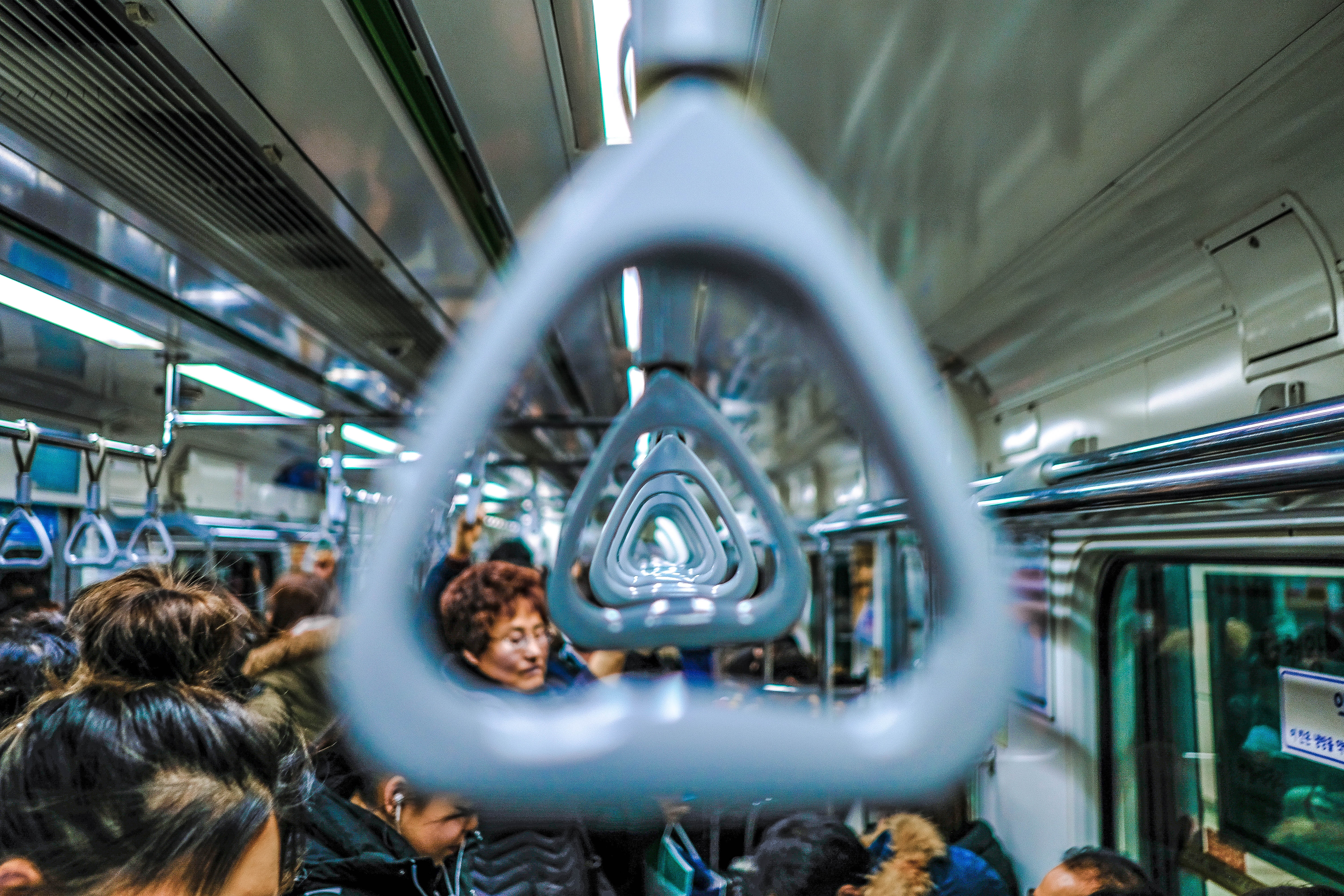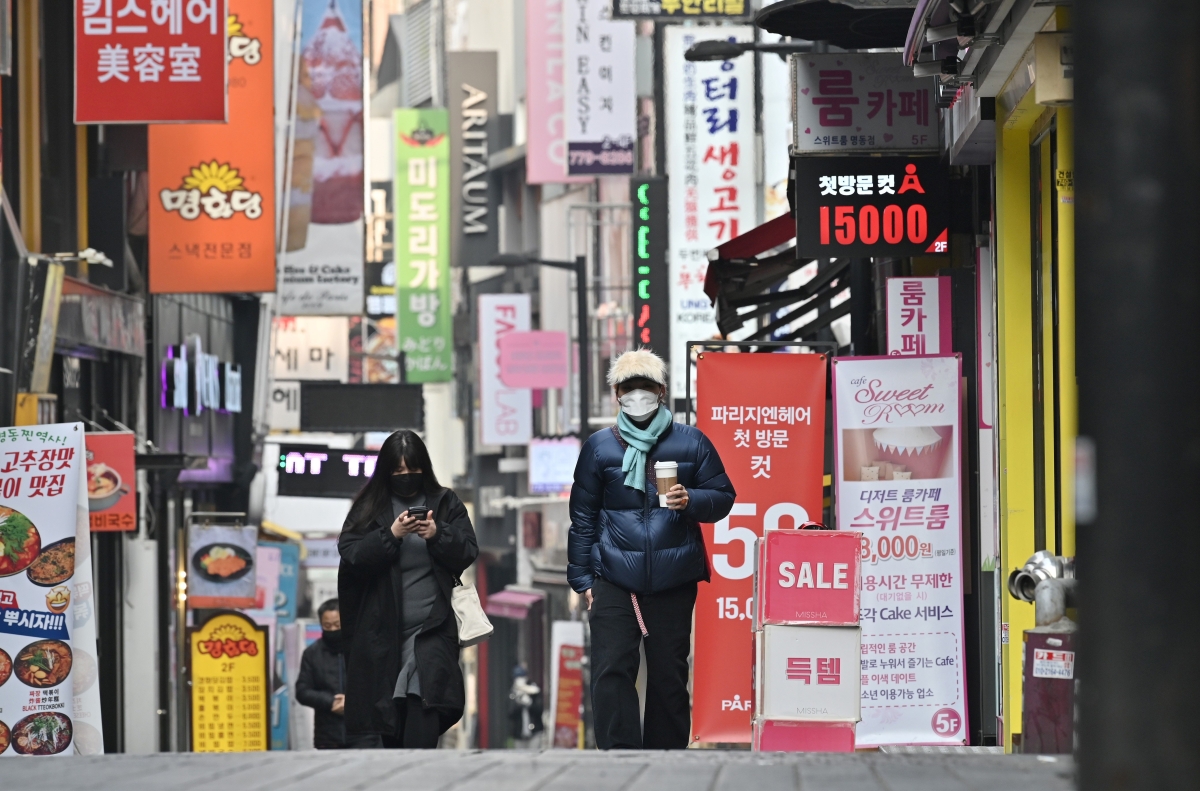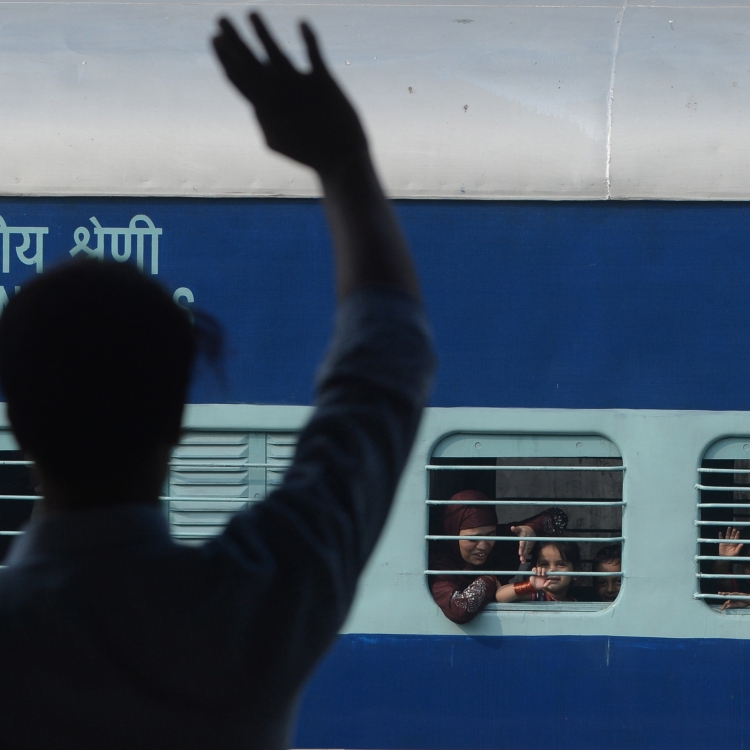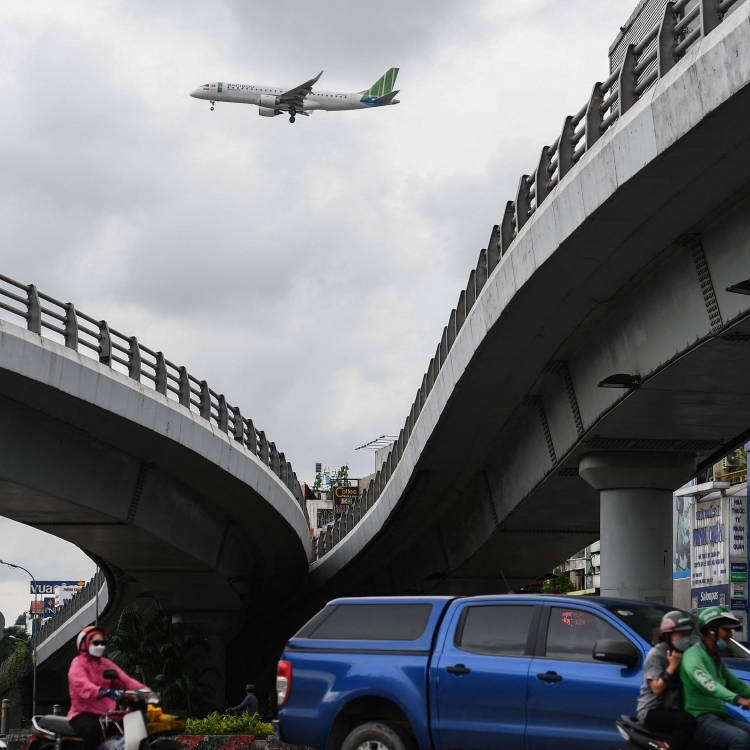magazine text block
Even a cynic would have found it an unforgettable image: When South Korean President Moon Jae-in stepped down from his plane at Pyongyang’s airport in September 2018, he was greeted by North Korean leader Kim Jong Un with a warm embrace. The historic summit in the North Korean capital marked the third meeting between the two in 2018, a year that also featured a joint Korean team at the Winter Olympic Games in Pyeongchang, South Korea. Bonhomie aside, Kim and Moon concluded their meeting with few tangible achievements. But speaking in New York later that month at an event co-hosted by Asia Society, Moon was ebullient. “There is something miraculous happening on the Korean peninsula,” he said.
If Moon is right — and that’s a big if — North and South Korea could achieve real diplomatic breakthroughs in the coming years. It’s clear what Moon’s ultimate goal is: reunification. In a nationally televised speech delivered in August 2019, Moon pledged to achieve the merger of the two Koreas by 2045, the centennial of Korea’s liberation from imperial Japan.
On this score, Moon may well be disappointed. The prospects for Korean unification are as dim as ever — and are likely to grow even dimmer as the years pass.
The 1945 division of Korea into two halves — the north under Soviet control, the south to the U.S. — traumatized the peninsula, permanently separating millions of families whose members straddled both sides of the border. In the early postwar years, the differences between the two Koreas were comparatively slight. Despite being on opposite sides in the Cold War, North and South Korea were both impoverished states ruled by authoritarian governments. Today, the differences are stark. South Korea, a country of 51 million, is a thriving democracy and one of the world’s most dynamic economies and a major exporter of electronic goods and cultural products. North Korea, half as large, has an economy 50 times smaller and is one of the most repressive autocracies on earth.
Moon’s diplomatic charm offensive is arguably the most sustained push to improve ties with North Korea since the so-called “Sunshine Policy,” an initiative launched by former president Kim Dae-jung in 1998 that established an unprecedented level of diplomatic and economic ties between North and South Korea. (In fact, Moon’s diplomatic charm offensive borrows so much from Kim’s that it has been referred to as a “Moonshine Policy”). But the North Korea of the turn of the century is far different from the country Moon is dealing with today. Following the collapse of Soviet subsidies in 1991, North Korea experienced a famine that led to hundreds of thousands of deaths and sparked widespread malnutrition. North Koreans had less access to the outside world than they enjoy today, due to goods flowing across the relatively porous Chinese borders. With the U.S.S.R. gone and China turning decisively toward market economics, North Korea seemed bound for a similar transformation.
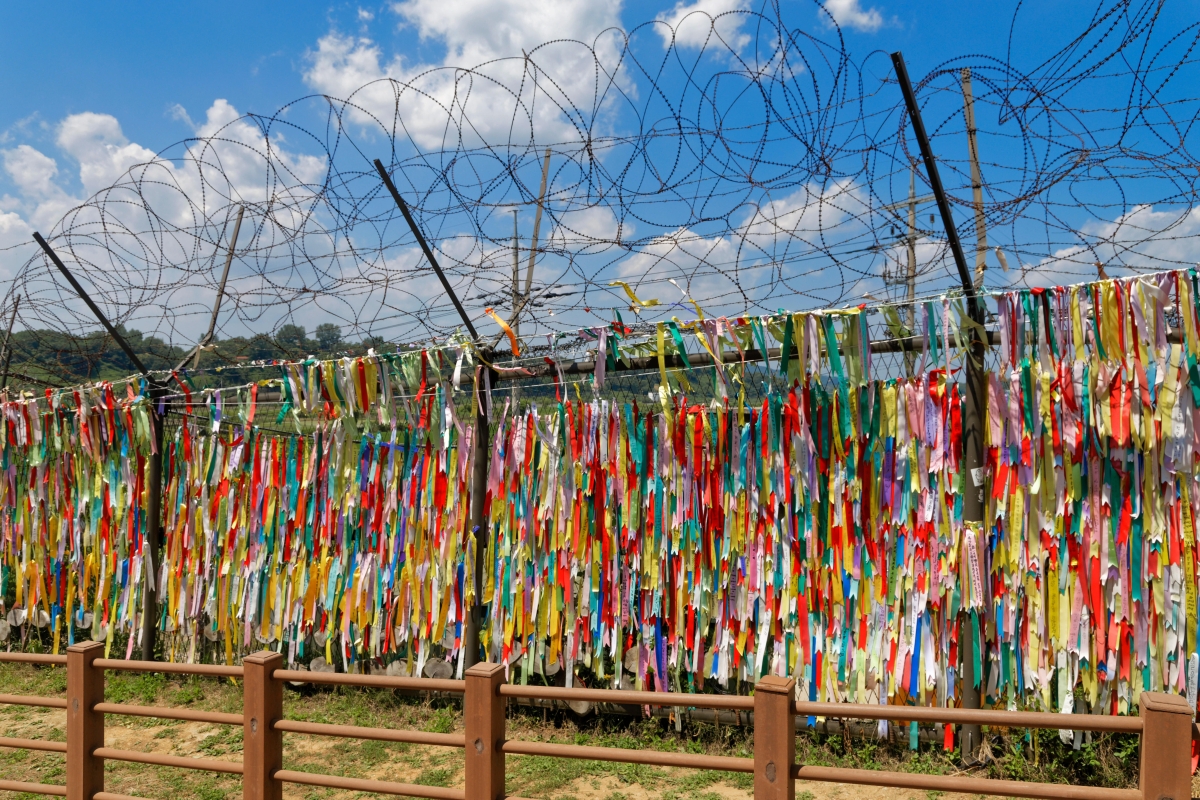
Messages of peace and unity left on a fence at at the so-called “Bridge of No Return” located at the Korean Demilitarized Zone, at Imjingak, South Korea.
Igor Prahin/Alamy
magazine text block
“It was natural for South Koreans to have expectations that [the Sunshine Policy] could lead to reunification,” said John Delury, a professor at South Korea’s Yonsei University and a member of Asia Society’s Asia 21 Young Leaders network. “It was a period when everyone was writing op-eds about North Korea collapsing tomorrow or the day after tomorrow.”
Today, North Korea remains one of the world’s poorest and most isolated countries. But few predict imminent collapse. Illicit economic activity across the Chinese border as well as modern market reforms have lessened food insecurity and increased prosperity somewhat. The Kim family regime moved past the sudden death of Kim Jong Il in 2011 with the accession of his untested son, Kim Jong Un, as supreme leader. Since assuming office, the younger Kim has consolidated control by arranging the murders of his powerful uncle, Jang Song Thaek, and later his half-brother, Kim Jong Nam. Just 36 years old now, he may well be poised to govern North Korea deep into the 21st century.
Through a combination of deft diplomacy and dumb luck, Kim is also less isolated than ever. In addition to his growing engagement with Moon Jae-in, Kim has met several times with Xi Jinping, China’s president and North Korea’s most important patron. And, in a summit in June 2018, he became the first North Korean leader to meet with a sitting U.S. president when Donald Trump arranged the encounter in Singapore. (Though many derided it as little more than a photo opportunity, it was of undeniable value to Kim.) Kim’s whirl of activity has yielded little progress in eroding crippling economic sanctions. But some believe they have softened his reputation as the brutal scion of a pariah state.
“Kim has all these leaders lining up to meet him,” said Jieun Baek, an Asia 21 Young Leader and expert in North Korea at Oxford University. “He has all the legitimacy he needs domestically and, increasingly, internationally — even in South Korea.”
Even if North Korea were on the verge of collapse, meanwhile, it is far from assured that South Koreans desire reunification. The most recent survey by Seoul’s Korea Institute for National Unification suggests that less than a third of the population would prefer unification to peaceful coexistence. The tens of thousands of North Koreans who have defected to the South and remained there have faced discrimination and struggled to adapt to life in their new country, making the prospect of assimilating North Korea’s entire population especially daunting. A 2014 study found that nearly 60% of North Koreans are reluctant to disclose their origins. And while the South Korean government still assists recent North Korean refugees with housing stipends and job training, Seoul has recently made cuts to this budget. The issues surrounding the integration of refugees (who, after all, risked their lives to go to South Korea) do not bode well for reunification.
“[If South Korea] can’t integrate 32,000 people, how are they going to integrate 25 million, the majority of whom had no interest in defecting and who were raised to hate South Korea and its allies?” Baek asked.
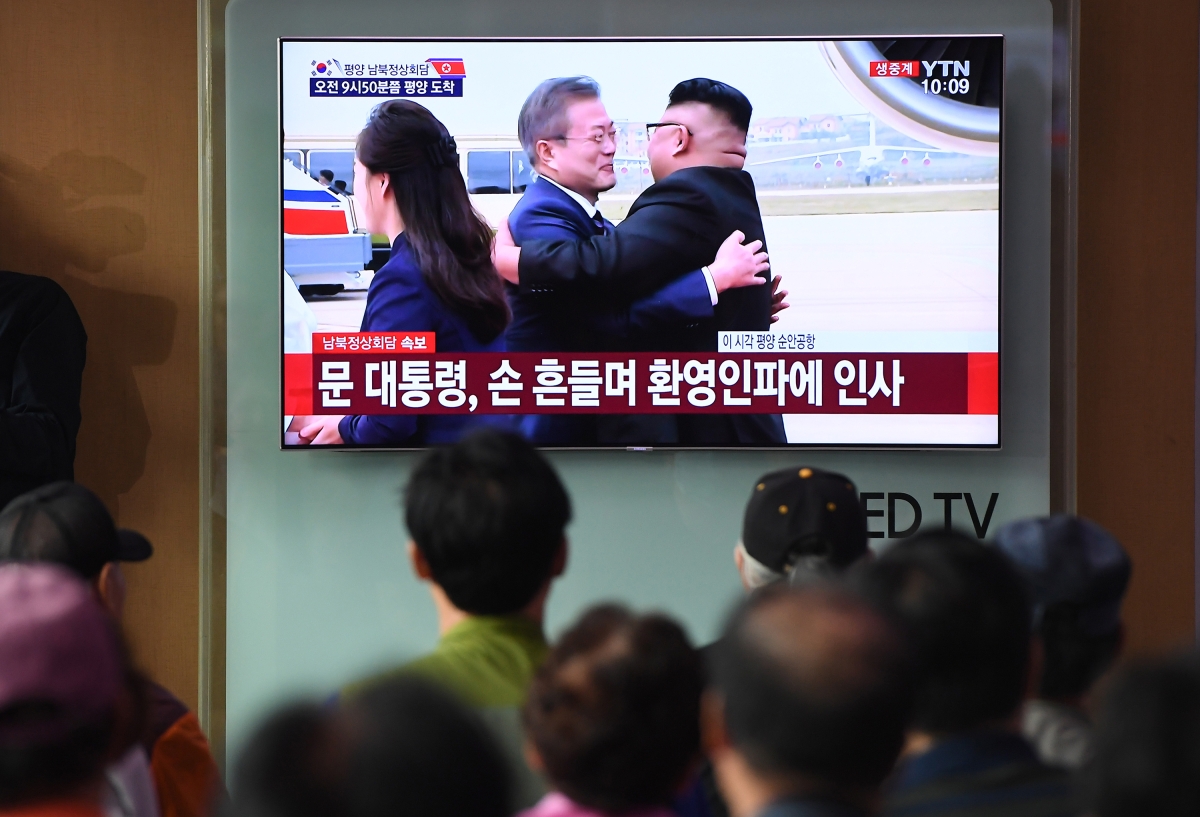
People watch a screen showing live footage of the arrival of South Korean President Moon Jae-in at Pyongyang airport as Moon Jae-in and North Korean leader Kim Jong Un hug, at a railway station in Seoul on September 18, 2018.
Jung Yeon-Je/AFP/Getty Images
magazine text block
Then there’s the projected cost. The 1990 merger of East and West Germany may be considered a best-case scenario for the two Koreas — countries divided by ideology that retained cultural and linguistic ties. Thirty years after reunification, and after an estimated $2 trillion of government spending, residents of the former East Germany remain significantly poorer than their counterparts in the West.
A Korean reunification would make Germany’s feel like a minor overture. While West Germany was between two and three times as rich as the East, South Korea is currently 25 times wealthier than the North. The cost of reunification is conservatively estimated to be $3 trillion, 50% greater than South Korea’s entire economic output. And the cost of these burdens would be particularly acute for South Korea’s young, who already face high unemployment (the Korean Bureau of Statistics estimates youth unemployment to be 9.5%, one of the highest rates in the OECD). Unsurprisingly, a poll conducted in 2018 found that South Koreans in their 20s and 30s are more than twice as likely to be indifferent to reunification than those in their 50s and 60s. The population of South Koreans with personal ties to relatives north of the border is dwindling with age; family separation, a wrenching issue for many South Koreans, will almost certainly diminish in salience as the years pass.
“Younger South Koreans are typically not that focused on North Korea,” Delury said. “They don’t want to absorb a basket case.”
The lower likelihood of reunification, however, does not mean that North and South Korea are destined to remain at loggerheads. Resolution of the nuclear issue — itself no small feat — would be a more immediate priority, as would promoting economic and people-to-people ties between the two nations. “Overall, what I think that [the Moon] government is working on and what the majority of the South Korean public wants,” said Delury, “is to change the relationship so that it’s not based on threats and hostility.”
Whether these goals are realized, it’s worth pointing out that South Koreans are not the only ones with an opinion about reunification. In April, Kim Jong Un introduced a new title for himself: “Supreme Representative for All the Korean People,” an indication that he, too, favors an eventual reunion with the South — just on his terms.
